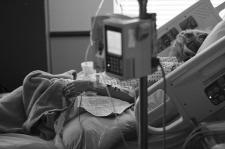Severe ovarian hyperstimulation syndrome (OHSS) is a serious and potentially fatal condition caused by overstimulation of the ovaries by drugs during IVF treatment. It is preventable with the modern management of IVF cycles, and the incidence of the condition should therefore be falling precipitously to almost zero – as it is in many countries. Indeed, my own clinic has not had a case of severe OHSS for over 15 years. However, in its latest report on adverse incidents in fertility clinics, the Human Fertilisation and Embryology Authority (HFEA) noted a 'slight increase' in the number of severe OHSS incidents reported to it in 2015 (1). In fact, this statement obfuscates the significance of the matter – there has been a 40 percent rise in hospital admissions with severe OHSS in UK fertility clinics in 2015 (2). This is an extraordinary statistic. The HFEA should be putting this alarming statistic on the front page and discussing methods to reverse this trend. Yet the very opposite appears to be the case. It is impossible to extract the number of OHSS...
Ovarian hyperstimulation syndrome – it's time to reverse the trend
By Geeta Nargund,
BioNews
| 12. 05. 2016
Perspectives
By Emma McDonald Kennedy
| 09.25.2025
Related Articles
The Center for Genetics and Society is fiscally sponsored by Tides Center, a 501(c)(3) non-profit organization.
Please visit www.tides.org/state-nonprofit-disclosures for additional information.
© 2023 Tides Center, through the Center for Genetics and Society. All rights reserved.
Privacy Policy. Terms of Use.




